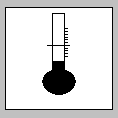| Preserved foods | [German version] |
Table of contents |
|
| General: | ||
| Product information | ||
| Packaging | ||
| Transport | ||
| Container transport | ||
| Cargo securing | ||
Product information
Product name
| German | Konserven |
| English | Preserved foods |
| French | Conserves en boîtes |
| Spanish | Conservas en latas |
| Scientific | |
| CN/HS number * | 1601 00 ff. Preserved sausages 1602 ff. Preserved meat 1604 ff. Preserved fish 20 ff. Preserved vegetables 2008 ff. Preserved fruit |
(* EU Combined Nomenclature/Harmonized System)
Product description
Preserved foods are preserved by heat sterilization in hermetically sealed containers of sheet metal, glass or composite films.
Preserved foods are classified as follows:

Figure 1
Sterilization is performed in autoclaves, i.e. airtight sealed boilers, by steam at 115 – 120°C and above atmospheric pressure. These high temperatures are lethal to thermophilic microorganisms and their spores. If the sterilization process is not performed correctly, the microorganisms remain alive. For quality control purposes, the manufacturers therefore remove some of the jars and cans from the production line and test them for several days in an incubator at 37°C. If the cans blow during this test period, this is an indication of defective production. However, absolute sterility cannot be achieved.
Production flow chart for preserved foods:

Figure 2
A distinction is drawn between:
| fully preserved foods: these are sterilized (foods heated to > 100°C) and pasteurized (pickled foods heated to 70 – 80°C). Fully preserved foods have a long shelf life without refrigeration. | |
| semi-preserved foods: these are pasteurized fish and meat products, which should be refrigerated and have only a limited shelf life. |
Quality / Duration of storage
The storage life of preserved foods is determined by the type and quantity of thermophilic bacteria not killed by sterilization. At normal storage and transport temperatures < 20°C, shelf life is at least 1 year or longer. However, it should be noted that their quality falls steadily during storage, this degradation primarily being manifested in eating quality. Foods preserved in jars have a shorter shelf life than canned foods. Inadequate sterilization or storage at excessively high temperatures may cause preserved foods not resistant to tropical conditions to blow.
| Type | Temperature | Relative humidity | Maximum duration of storage |
|---|---|---|---|
| Canned foods in general | < 20°C | 60% | at least 1 year |
| Preserved foods in jars, in general | 0 – 12°C | 40 – 75% | 3 – 6 months |
| Preserved fruit in jars | 4 – 20°C | 40 – 75% | 12 months |
| Preserved vegetables in jars | 4 – 20°C | 40 – 75% | 8 months |
| Ready meals in jars (ready-to-serve preserved foods) | 4 – 20°C | 40 – 75% | 6 months |
Intended use
Food preservation is an important way of extending the storage life of foodstuffs. This means that foodstuffs may be stored and transported over an extended period.
Countries of origin
This Table shows only a selection of the most important countries of origin and should not be thought of as exhaustive.
| Europe | Greece, Portugal, Spain, Germany, Netherlands |
| Africa | |
| Asia | Israel, East Asia (China), Vietnam |
| America | South America, USA, Brazil |
| Australia |
Back to beginning
Packaging
Preserved food cans or jars are packaged in cartons of corrugated board or millboard, often provided with metal strapping or adhesive tape, and generally palletized. The packaging size is so selected that the dimensions of the individual area modules or area module multiples are conformed to the conventional pallet sizes (800×1200 mm and 1000×1200 mm) and cargo units may thus be produced.
Cartons are often relatively weak, in particular when gray paperboard made from gray chip (waste paper) is used, which is very hygroscopic and susceptible to mold. Moldy cartons lead to a reduction in utility value (foodstuffs legislation), even if the cans are not yet corroded. Wet strength paperboard cartons are best. Corrugated board cartons are more susceptible to puncturing, moisture and water vapor condensation than cartons made of millboard. Corrugated board and millboard may be protected by impregnation with wax or coating with polyethylene.
Equally crucial to the stability of the cartons is secure closure with a sufficiently tear-resistant adhesive strip or a clip. Strapping provides additional protection.
To protect the cartons from moisture, it has proven advantageous to form relatively large cargo units and to heat-seal several cartons in transparent film without the pallet. The cartons heat-sealed in this way have then to be secured to the pallet with an additional shrink film or with straps.
| Marking of packages | ||
 Keep dry |
 Top |
 Keep away from heat (solar radiation) |
Back to beginning
Transport
Symbols
 General cargo |
 Temperature-controlled |
Means of transport
Ship, truck, railroad, aircraft
Container transport
The type of container selected depends on the season, the route, the duration of the voyage and the container stowage space. Preserved foods are generally transported in standard containers, subject to compliance with the water content of flooring and packaging. However, low external temperatures, solar radiation or other external influences may bring about the risk of frost or heat in the container. It may therefore be sensible to use refrigerated containers (integral units or porthole containers). Due to their insulated walls, these are less sensitive to external influences and have means for controlling the temperature of the container interior.
To prevent damage to the cargo, the container must always be absolutely dry and water-tight.
Cargo handling
It is also imperative that the goods be protected from moisture (rain, snow) during cargo handling and from excessively low and high temperatures, as the packaging (paperboard cartons) is extremely sensitive to moisture and loses stability. There is an additional risk that cans or jars may lose their labels or cans may corrode.
Both the cartons and the cans or jars (particularly glassware) are relatively sensitive to mechanical stresses. If the packages are handled improperly, e.g. thrown, there is a risk of damage (e.g. cartons may become battered or glass jars broken). The cargo should accordingly be handled with appropriate care.
Stowage factor
The stowage factor of preserved foods varies according to content and packaging:
| pineapple: 1.61 m3/t (cartons, wet strength corrugated board, 25.5 kg each) [1] | |
| apricots: 1.56 – 1.70 m3/t (cartons, millboard, 24 kg each) [1] | |
| preserved fish: 1.53 m3/t (cartons, millboard, 12 kg each) [1] | |
| condensed milk: 1.31 – 1.75 m3/t (cartons, paperboard) [1] | |
| pork: 1.70 m3/t (cartons, wet strength corrugated board, 25 kg each) [1] | |
| tomato paste: 1.50 – 1.85 m3/t (cartons) [1] |
Stowage space requirements
If containers are transported on deck, those in the uppermost tiers and/or outer rows are exposed to considerable levels of wind, precipitation, temperature fluctuations and solar radiation (risk of formation of condensation water). It is therefore necessary to stow them below deck or at least surrounded at the side and top by other containers for protection. In port, care should be taken to ensure that the containers do not stand out in the open and that the duration of storage is as short as possible.
The cargo must not be stowed near heat sources (risk of blowing caused by heat).
The best stowage spaces are amidships, as these are least exposed to the ship’s movements and the contents of preserved food cans and jars may be sensitive to jolting/vibration (soft fruit may become puréed, for example).
Segregation
Marker pen/oil crayon (preferred)
Cargo securing
Because of its considerable impact- and pressure-sensitivity, packages of this cargo must be secured in such a way that they are prevented from damaging each other. Spaces between packages or pallets must be filled, to prevent slippage or tipping. By selecting the correct packaging size or cargo unit (area module or area module multiple), holds can be tightly loaded (without spaces).
Back to beginning
Risk factors and loss prevention
RF Temperature
Preserved foods require particular temperature, humidity/moisture and possibly ventilation conditions (SC VI) (storage climate conditions) .
Favorable travel temperature range: 2 – 20°C [1]
At temperatures < -2°C there is a risk that cans may blow due to freezing of their contents (ice expansion).
At temperatures > 20°C, cans or jars may blow due to heating which results in thermal expansion.
 Figure 3 |
 Figure 4 |
Long-term exposure to high temperatures may lead to:
| puréeing (soft consistency) of fruits, syrup formation and overseasoning (predominance of any one seasoning component) | |
| separation, settling | |
| marbled effect in preserved foods which have a high protein content (meat, fish, peas, beans) due to sulfidic corrosion. This occurs if the sulfur components of the proteins act on tin or sheet iron. |
Where container transport is used, the risk of blowing due to the action of heat and frost is greatest in the vicinity of the container roof. The additional moisture released as a result of leakage due to blowing aggravates wettening of cartons and corrosion of cans.
Back to beginning
RF Humidity/Moisture
Preserved foods require particular temperature, humidity/moisture and possibly ventilation conditions (SC VI) (storage climate conditions) .
| Designation | Humidity/water content | Source |
| Relative humidity | 60 – 70% | [1] |
| Water content | 5 – 8% (relative to paperboard cartons) | [1] |
| Maximum equilibrium moisture content | 70% | [1] |
The cartons must be protected from all forms of moisture (seawater, rain and condensation water) and from excessive humidity levels. Typical patterns of moisture damage to a cargo of preserved foods are as follows:
| loose, mildewed, unattractive labels | |
| mold on and in cartons | |
| crushed cartons, due to moisture penetration, leakage, total loss | |
| corroded, discolored cans; corroded cans are unsalable |
 Figure 5 |
 Figure 6 |
If the glue used to stick on the labels is not acid-resistant, corrosion is encouraged even at normal humidity levels. High-grade, water-resistant adhesives must be used for labels.
Corrosion damage arising during overseas shipment of cans in containers [1]:
| Pattern of damage | Possible cause | ||||||
|---|---|---|---|---|---|---|---|
| 1. Wet, rusty or moldy cans, top layer of stack | Container ceiling has become too cold, container was probably exposed to low night-time outside temperatures. | ||||||
| 2. Top and bottom layers and pallets wet | As for 1, but worse, water has run down the side walls onto the pallets. | ||||||
| 3. Rusty cans at bottom, sodden pallets | As for 2, except that the condensation water has collected on the floor and not merely dripped from the ceiling. | ||||||
| 4. Rusty cans in the top and bottom layers, but water content of cardboard packaging as on loading | As for 2, except that some time has passed, allowing the water to spread. | ||||||
| 5. Outer layers good but inner pallets moist, moldy and possibly rusty | Container walls were too hot, probably caused by standing in hot external air or in the sun. The outer cartons have become heated and the water has moved on to the colder packages. | ||||||
| 6. Damage along just one side of the container |
|
||||||
| 7. Damage in the door area, noticeable when the doors are opened |
|
||||||
| 8. Water on cartons immediately after opening the doors | The dew point of the ambient air is higher than the temperature of the cans. | ||||||
| 9. Clusters of damage, spread throughout the entire cargo |
|
Where preserved foods are transported in containers, the causes of condensation are as follows:
| excessive water content in cartons, pallets and wooden dunnage | |
| temperature gradients within the cargo stack, leading to cargo condensation | |
| drop in temperature in the peripheral zones of the container, in particular at the container roof, leading to container condensation | |
| Part-loads with different temperatures, e.g. simultaneous stowing of relatively cold preserved food cans and relatively warm hygroscopic goods. |
The main cause of condensation on cans or jars of preserved food is an excessive water content of cartons, pallets and wooden dunnage. The water content of paperboard should be 5 – 8% and that of lumber 12%. This corresponds to an equilibrium moisture content of 70% at 20°C. High equilibrium moisture contents have repeatedly led to mold and mildew formation on and in cartons, in some cases even resulting in total loss of a consignment. Mold appears after 5 – 15 days, if the above water content values are exceeded. The problem is caused by, among other things, the frequent use, for example, of fresh lumber to make boxes. In this way, water contents of 18 – > 30% have in the past been detected.
Containers should not be packed during precipitation. It is essential not to stow any wet or snow-covered cargo units in the containers.
When shipping containers of preserved foods are landed in winter, immediate unpacking or at least opening of the container doors is required, as otherwise very severe condensation on the internal walls and ceiling of the container will saturate the cartons of preserved food. The cause in this instance is the high intrinsic temperature of the cargo of preserved foods relative to the low external temperature.
The wooden flooring of the containers must be absolutely dry. The water content of the flooring should be 12%, to ensure an equilibrium moisture content of 70% at 20°C.
To protect the cargo from condensation water dripping down from the container roof, it may be helpful to use anti-condensation films or a packing paper lining.
Back to beginning
RF Ventilation
Preserved foods require particular temperature, humidity/moisture and possibly ventilation conditions (SC VI) (storage climate conditions) .
If the product is at „shipping dryness“, i.e. the water content of the paperboard cartons is 5 – 8%, ventilation is not normally required.
However, if there is a risk of cargo sweat, which may result, for example, in wetting of the paperboard cartons and thus in a reduction in stability and strength, the following ventilation measure is recommended:
Recommended ventilation conditions: air exchange rate: 6 changes/hour (airing)
Back to beginning
RF Biotic activity
Preserved foods display 4th order biotic activity.
Preserved foods are products in which biochemical and microbial processes have stopped and which are isolated from the external environment, as they are in hermetically sealed packaging (cans, jars).
Back to beginning
RF Gases
No risk.
Back to beginning
RF Self-heating / Spontaneous combustion
No risk.
Back to beginning
RF Odor
| Active behavior | Preserved foods do not cause odor-tainting, as they are enclosed in hermetically sealed packaging. |
| Passive behavior | Preserved foods should not be stowed in a hold/container together with odor-tainting goods. |
Back to beginning
RF Contamination
| Active behavior | Preserved foods do not normally cause contamination. However, other goods may be contaminated by leakage caused by breakages, in particular in the case of glass jars. |
| Passive behavior | Preserved foods should not be stowed in a hold/container together with goods which cause contamination or produce large amounts of dust. |
Back to beginning
RF Mechanical influences
Cartons should not be thrown during handling, as there is a risk of their becoming battered. Mechanical stresses during cargo handling may, for example, destroy the adhesive strips or dent the carton walls and edges. Extreme stress may lead to breakage of the preserved food containers, in particular glass jars.
Cartons which have inadequate strength are frequently damaged when stowed carelessly and inappropriately. The cans become dented and squashed. Leakage results in total loss. If the contents of the cans leaks out, the cartons become soft and the carton stacks may collapse. Jars and large cans should be packed in compartmentalized cartons.
The packages must be secured appropriately in the hold or container so that they cannot move during transport. In the case of container transport, it is also important for the goods to be secured in the door area so that they cannot fall out of the container when the doors are opened.
 Figure 7 |
 Figure 8 |
Back to beginning
RF Toxicity / Hazards to health
Preserved foods must not be stowed in a hold/container together with toxic goods (foodstuffs legislation). If optimum storage conditions are not complied with for a relatively long period, depreciation occurs with respect to the can contents, which may sometimes present a serious hazard to health. One characteristic feature of reduced quality is „blowing“, in which disadvantageous changes generate gases („blowing gases“), which cause the bottom and lids of cans to swell and even burst. Swelling caused by blowing differs from straightforward bulges in that it either cannot be pressed back in at all or bulges out again when pressure is released. Apart from apparent blowing (thermal causation, expansion due to freezing/heating), blowing may also have microbiological and chemical causes. In the case of microbiological blowing, the typical blowing gases are, for example, hydrogen sulfide (where protein is present), carbon dioxide and hydrogen. Chemical blowing may be observed in the case of preserved fruits and jams, hydrogen being produced due to the reaction of metal and acids and corroding the insides of the cans.
Back to beginning
RF Shrinkage/Shortage
Loss of volume may be caused by breakage, leakage or theft. To avert the risk of theft, in the case of container transport the containers should be stowed such that the doors of adjacent containers block each other, thereby preventing access to the container interior.
Back to beginning
RF Insect infestation / Diseases
No risk.
Back to beginning
